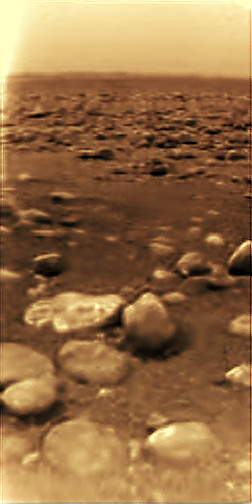On Friday September
15, 2017 NASA will send its Cassini spacecraft one final set of instructions—to
fly directly into Saturn’s atmosphere, destroying the spacecraft. Running low
on fuel after spending thirteen years in orbit around Saturn, Cassini has
reached the end of its operational life. NASA decided to crash Cassini into the
atmosphere rather than risk biologically contaminating one of the planet’s moons
with an accidental collision. After
almost twenty years since leaving Earth, the Cassini mission has been one of
NASA’s most successful exploratory missions, returning a whole host of data
about our solar system’s 6th planet.
The
Cassini-Huygens probe launched from Cape Canaveral on October 15, 1997. The
Cassini-Huygen’s original mission called for the spacecraft to explore the
structure and behavior of Saturn’s rings, the composition of its moons, the
behavior of its atmosphere, and land the Huygens probe on the surface of Titan.
Planning for the mission began in 1982 as the result of a collaboration between
NASA, the European Science Foundation, and the Italian Space Agency. Soon after
its launch, Cassini performed two gravitational-assist flybys of Venus, one of
Earth, and one of Jupiter in order to propel it to Saturn. On July 1, 2004, after
a nearly seven year journey, Cassini finally entered orbit around Saturn.
On
Christmas Day 2004, the Huygens probe separated from the Cassini orbiter and
began its descent towards Titan. Titan has long fascinated astronomers because
of it is the only moon in the Solar System with a dense atmosphere (similar to
Earth’s) and the only other planetary body to have liquids on its surface. It
is primarily composed of ice and rock. The Huygens probe landed on Titan on
January 14, 2005. It was the first and, so far, only landing of an Earth-made
probe in the outer Solar System. The probe, weighing about 700 lbs, gathered
data about Titan’s atmosphere and surface conditions and sent back about 350
photographs of Titan. Readings from the probe confirmed the existence of liquid
lakes, rock clusters, and methane clouds. The planet’s atmosphere creates a
surface remarkably similar to Earth including rivers, lakes, seas, and dunes.
Titan has seasonal weather patterns and it even has wind and rain storms.
 |
| The surface of Titan |
During its
almost thirteen years in orbit around Saturn, Cassini has greatly expanded our
knowledge of Saturn. Besides the Huygens probe, here are some other highlights
of the mission.
Saturn’s Hurricane—In November 2006, scientists spotted a storm
with an eyewall (like you see in a hurricane) around Saturn’s south pole. This was
the first sighting of this feature on a planet other than Earth. Unlike
hurricanes, this storm is stationary at the south pole and is 5,000 miles
across and 43 miles high with winds up to 350 mph.
Flybys of Moons—Besides visiting Titan, Cassini has engaged
in multiple flybys of Saturn’s other moons. It has also discovered seven
smaller, previously unknown moons. The photos of the moon Phoebe revealed that
it likely has ice just under its surface. During its flybys of Enceladus,
Cassini discovered the existence of ice geysers near the South Pole and later
confirmed the existence of a subsurface liquid water ocean.
 |
| Saturn's rings, close-up |
Saturn’s Rings—Cassini also performed extensive experiments
on Saturn’s rings in order to uncover their composition and structure. It has
also returned some remarkable photographs of the rings themselves.
The Great Storm—In 2012 Cassini observed the results of the
Great White Spot (similar to Jupiter’s Great Red Spot) storm that occurs every
30 years or so. Cassini discovered that Saturn’s storm is the result of the
loss of acetylene gas, an increase in phosphine gas, and a decrease in temperature
in the storm’s center. This causes the storm to become white and make it
visible to telescopes.
In the last
months of its life, Cassini has been undertaking dives into Saturn’s rings in
order to capture most information and photographs of Saturn’s most distinctive
feature. With the spacecraft at the end of its operational life, NASA decided
to engage in the dives and risk the damage or destruction of the spacecraft.
However, Cassini survived its various plunges into the rings and has returned
some remarkable images. On Friday, NASA will order the spacecraft to descend
into Saturn’s atmosphere, ending Cassini’s tenure as one of the space program’s
most remarkable and successful missions.


No comments:
Post a Comment